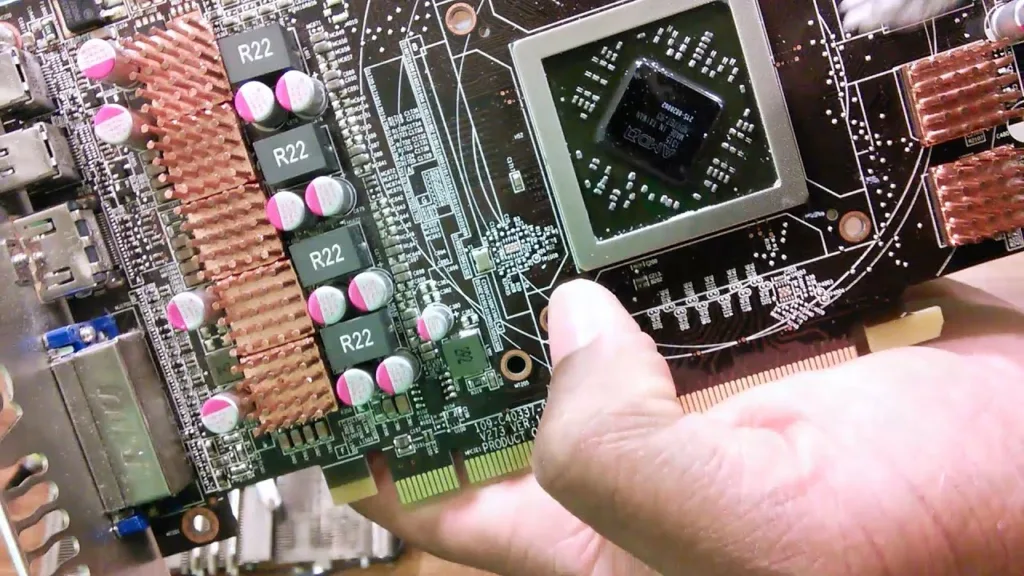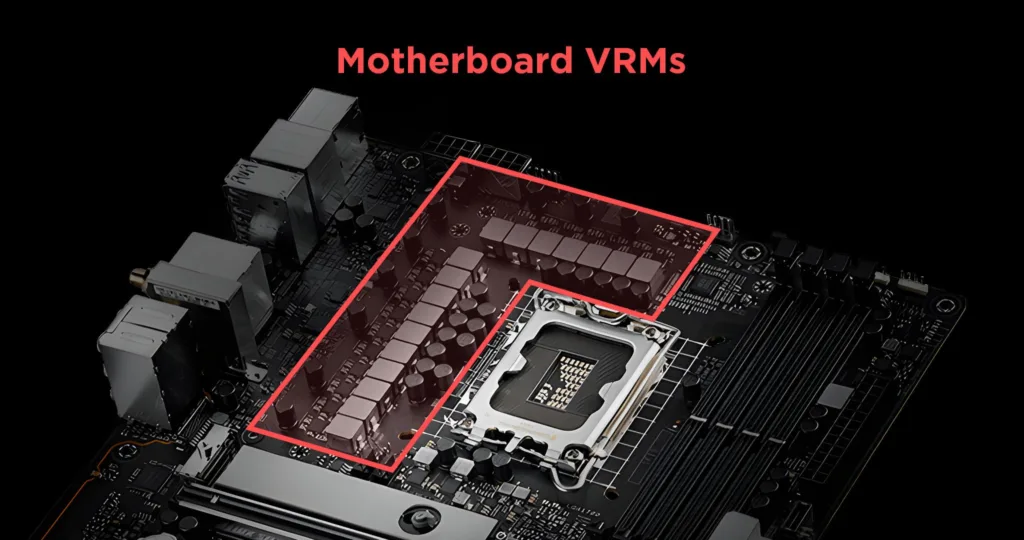The VRM, or voltage regulator module, is an essential component found in modern computer systems. It is responsible for regulating and converting the voltage supplied to the CPU or GPU. This component is critical to the performance and stability of the system, and it is essential to ensure that it is functioning correctly.
One of the most significant concerns when it comes to VRMs is their temperature. VRMs can become quite hot, particularly uder heavy loads or when overclocking. This can lead to degraded performance and even system instability if left unchecked.
Fortunately, there are ways to monitor VRM temperatures and ensure that they are functioning correctly. One useful tool for this purpose is AMD’s Global Wattman. This tool allows you to track GPU temperature and other key statistics in graph form.
To access Global Wattman, right-click on the Windows desktop and select Radeon Settings. From there, head to Gaming > Global Settings > Global Wattman. After acknowledging a warning about the risks of overclocking, you’ll gain access to Wattman, which tracks GPU temperature and other metrics in real-time.
When monitoring VRM temperatures, it’s important to keep in mind that temperatures can vary depending on the load on the system. For example, VRM temperatures may be lower when the system is idle or under light loads but can increase significantly under heavy loads or when overclocking.
It’s also worth noting that different components may have different VRM temperature thresholds. For example, while a CPU’s VRM may measure around 80°C- 100°C without cooling, a GPU’s VRM may increase up to 120°C. It’s essential to be aware of these differences and monitor VRM temperatures accordingly.
Monitoring VRM temperatures is an important part of ensuring the stability and performance of your computer system. By using tools like Global Wattman, you can track temperatures in real-time and take steps to prevent overheating and system instability. So, keep an eye on those VRM temps and enjoy a stable and high-performing computer system.
Measuring GPU VRM Temperature
The GPU VRM (Voltage Regulator Module) temperature is an important metric to monitor while overclocking your graphics card. The VRM regulates the voltage supplied to the GPU, and if it overheats, it can lead to instability and even hardware failure. Therefore, it’s essential to keep an eye on the VRM temperature to avoid any such issues.
To measure the GPU VRM temperature, you can use software tools such as MSI Afterburner, GPU-Z, or Radeon Settings. These tools provide real-time temperature monitoring and graphing options to help you keep track of the VRM temperature.
In Radeon Settings, for instance, you can access the Global Wattman tool by right-clicking on the Windows desktop, selecting Radeon Settings, and then heading to Gaming > Global Settings > Global Wattman. Once you promise not to damage your graphics card, Wattman will give you access to the VRM temperature and other key statistics in graph form. This feature can help you monitor the VRM temperature and adjust the voltage and clock speeds of your GPU to maintain optimal performance while keeping the temperatures in check.
Measuring the GPU VRM temperature is a crucial step in ensuring the stability and longevity of your graphics card, and software tools such as Radeon Settings and MSI Afterburner can help you achieve this.

Signs of VRM Overheating
The VRM, or voltage regulator module, is an essential component of any computer’s motherboard. It regulates the voltage going to the CPU and other components, ensuring that they receive a steady supply of power. Overheating of the VRM can lead to instability, crashes, and even permanent damage to the motherboard or CPU. Here are some signs that your VRM may be overheating:
1. System instability: If your computer is crashing or freezing frequently, it may be due to a VRM overheating. This is because an overheating VRM can cause voltage fluctuations that can cause the system to crash or freeze.
2. High CPU temperatures: The VRM is located near the CPU socket, and if it’s overheating, it can cause the CPU to run hotter than usual. You can check your CPU temperatures using software like HWMonitor or Core Temp.
3. Burning smell: If you smell something burning or notice smoke coming from your computer, it’s posible that the VRM is overheating. This is a serious issue and should be addressed immediately.
4. Visual inspection: You can visually inspect the VRM to see if it’s overheating. Look for any discoloration or burn marks around the VRM area on the motherboard. Additionally, if you have a VRM heatsink, check to see if it’s hot to the touch.
If you suspect that your VRM is overheating, it’s important to take action to prevent damage to your system. You can try improving airflow in your case, adding additional case fans or replacing the VRM heatsink. In extreme cases, you may need to replace the motherboard or have it serviced by a professional.
What Are Ideal VRM Temperatures?
When it comes to VRM (Voltage Regulator Module) temperatures, there is no specific optimal range that applies to all CPUs or GPUs. The acceptable range of VRM temperature varies depending on the specifications of the particular CPU or GPU in question. However, there are some general guidelines that can be followed.
For CPUs, the VRM temperature usually ranges between 80°C to 100°C without cooling. This temperature range is considered normal and should not cause any concern. However, if the VRM temperature exceeds 100°C, it may cause the CPU to malfunction or even damage it over time. Hence, it is essential to make sure that the VRM temperature is kept witin the acceptable range, particularly during heavy usage or overclocking.
On the other hand, for GPUs, the VRM temperature can go up to 120°C, which is higher than the CPU’s VRM temperature range. This is because GPUs typically have a more complex VRM design, and they consume more power than CPUs. However, just like CPUs, if the VRM temperature of a GPU exceeds the acceptable range, it can cause the GPU to malfunction or damage it over time. Therefore, it is essential to keep an eye on the VRM temperature of your GPU, particularly during heavy usage or overclocking.
The acceptable range of VRM temperature varies depending on the specifications of the CPU or GPU in question. However, generally, the VRM temperature for CPUs should be between 80°C to 100°C, and for GPUs, it can be up to 120°C. It is essential to monitor the VRM temperature of your CPU or GPU to ensure that it stays within the acceptable range to avoid any damage or malfunctioning.
The Impact of VRM on Performance
The Voltage Regulator Module (VRM) is an essential component of any computer system that supplies voltage to the processor. It plays a significant role in regulating the power that the processor receives, ensuring that it is stable and reliable. A poor VRM can have a significant impact on the performance of a computer, especially when under load.
The VRM is responsible for converting the voltage from the power supply into a voltage that is suitable for the processor. It is essential that the VRM is of good quality because it can affect the stability and reliability of the processor. A poor VRM can lead to degraded performance and limit a processor’s ability to function under load. It can even lead to unexpected shutdowns, especially when overclocking.
A high-quality VRM will ensure that the processor receives a stable and reliable voltage, which can help to improve its performance. This is particularly important when the processor is beig pushed to its limits, such as when running demanding applications or games.
The VRM plays a crucial role in regulating the power that the processor receives, and a poor VRM can have a significant impact on the performance of a computer. It is important to ensure that the VRM is of good quality to ensure that the processor receives a stable and reliable voltage, which can help to improve its performance.

Conclusion
Monitoring your GPU’s VRM temperature is crucial to maintaining its performance and longevity, especially when overclocking. A poor VRM can lead to system instability and unexpected shutdowns, which can be frustrating for any user. By using tools like Radeon Settings and Global Wattman, you can easily track your GPU’s temperature and other key statistics in real-time. It is recommended to have proper cooling in place to ensure that the VRM temperature stays within safe limits. With proper monitoring and care, you can ensure that your GPU performs at its best for years to come.
